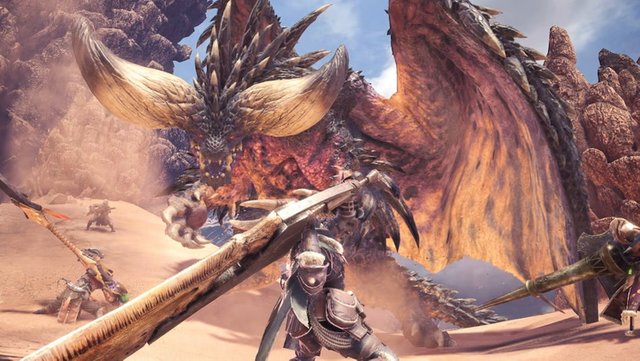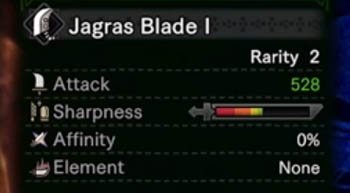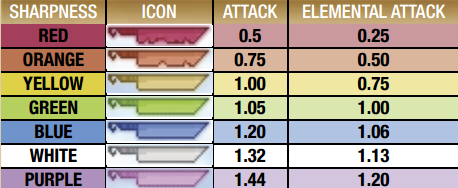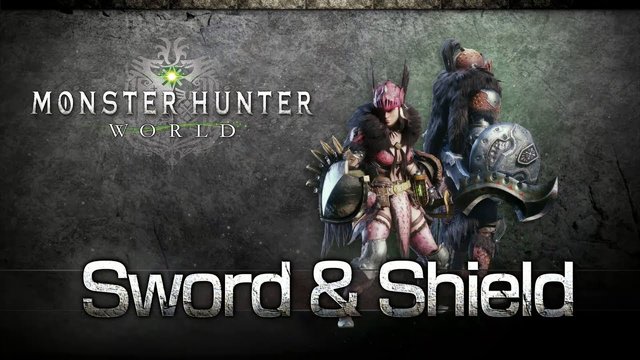Choose Your Weapon #1: Melee Weapons in Monster Hunter: World
With Monster Hunter: World released for the Xbox One and PS4, many new players have come to join the hunt - but with 14 weapon types to choose from and several unique mechanics, warming up to the way Monster Hunter does things can be a little daunting.
At its core, the series is best enjoyed as a gauntlet of boss fights. Each hunt pits you against an increasingly challenging foe, and tests your patience. But to be fully prepared for a hunt, you'll need to get acquainted with the weapon of your choice. In World, there are 11 melee weapons and 3 ranged weapons to choose from, alongside an arsenal of assorted hunting tools.

With so many to choose from, most players are bound to find one or two that best resonate with their playstyle. If you prefer feeling mighty behind a shield, the lance has you covered. If you want to make wyverns flinch with the heft of your blade, look to none other than the greatsword. If you want a piledriver that spits gunpowder and fire, then take up arms with the gunlance. Today, we'll cover all of the game's melee weapons - have a look through this guide, hop into your game, spend some time in the Training Room and discover the weapon that best fits you.
Basic Melee Mechanics
Melee weapons in Monster Hunter have several icons and numbers on the equipment screen which, at first, can be a little confusing. I'll give you a quick overview of each mechanic.

Raw Damage
This is the normal damage applied by all weapons. Bladed weapons deal slashing damage, while blunt weapons deal blunt damage. Very few monsters are highly resistant to raw damage, although some parts of a monster may have higher defenses than other parts.
Elemental/Status Damage
Elemental damage is applied per swing, which makes faster weapons more useful when focusing on elemental damage, including Water, Fire, Thunder, Ice and Dragon. However, different monsters are weak to different elements, so you'll want a weapon of each kind if you prefer faster weapons. Status damage is built up with every successful application (a chance of about 30% each swing) until a monster's threshold is met. At that point, the status takes effect.
Poison is damage-over-time, paralysis is a temporary stun, sleep causes the monster to go to sleep, and blast deals extra burst damage. KO is another status that is only applied by blunt attacks to the head and acts as a temporary stun like paralysis. Once the threshold is met, it is raised, making it increasingly more difficult to reapply the status.
Affinity
In Monster Hunter, affinity dictates your chances of doing a critical hit. Critical hits deal 125% of your normal raw damage, whereas a negative crit (only possible through negative affinity) equals 75% damage.
Sharpness
All melee weapons have a sharpness bar, which looks a little like this:

Your sharpness counts as both a damage modifier and determines whether you will bounce or not. Bouncing takes more sharpness than a successful attack would so take care not to dull your blade. Once your sharpness drops, take the opportunity to sharpen using a whetstone from your inventory. As far as is currently known, the damage modifiers for sharpness go as follows:
Yellow: 100%
Green: 105%
Blue: 120%
White: 132%
Purple sharpness, featured above, is typically only accessible through G-rank weaponry (which isn't in this game yet). Never go below yellow. Stay safe, and carry whetstones.
Greatsword

The greatsword is Monster Hunter's OG weapon. Its usage is bread-and-butter among myself and many other veteran hunters, and it is arguably the simplest weapon to use - and among the hardest to master. The main drawback of the greatsword happens to be its biggest strength as a beginner weapon: unsheathing it makes you incredibly slow, forcing you to take advantage of precise rolls and positioning to avoid getting hit. This emphasizes the game's focus on rhythm and reaction.
The greatsword's speed penalty does not apply when the weapon is sheathed, allowing you to hit-and-run - unsheathe into an attack, roll away from the monster, sheathe, and wait for another opening. Practice utilizing the weapon's charged attacks - holding the main attack button slowly builds up a 3-level charge, and letting go at the right time allows you to deal massive amounts of damage at the cost of waiting for the charge to build up. This forces you to learn the time windows between monster attacks, so you know when it's safe to go for a level 3 charge, or when you might just want to throw in a quick smack and roll away. If you're between a rock and a hard place, the block button allows you to make use of the greatsword as a shield, at the cost of a good deal of sharpness.
Because it's a slow weapon, each swing deals more damage than with most other weapons. This makes up for the lack of speed and mobility, and the long recovery period between attacks. It also makes the weapon's elemental and status damage mean less. When picking a greatsword, go for the biggest attack numbers.
Longsword

Unlike the greatsword, the longsword is a quick and nimble weapon, relying on its reach and Spirit Gauge mechanic to deal damage while keeping you out of harm's way. In the right hands, the longsword will allow you to dance around the monster, keeping up an incredible rate of aggression without having to go much on the defensive.
The core of the longsword is its Spirit Gauge - a gauge that continuously fills as you deal damage. When it is full, use the right trigger/block button to start your Spirit Combo. This is a series of attacks that end in a delayed, yet powerful round slash. When executed correctly and in its entirety, the Spirit Combo will grant you a rank of extra damage, wreathing your blade in white.
Complete it thrice in a row within a certain amount of time, and you'll hit yellow and red. The level of your gauge (none, white, yellow or red) will decay with time, making it important to find openings to attack with a combo or round slash. Monster Hunter: World has made this easier for longsword users through the new Foresight Slash, which lets you evade an attack and combo immediately into the round slash, but only if your timing is precise. Due to its speed, elemental damage is important when picking a longsword - but do not neglect the raw damage, either. Pick a balance between the two, and have a blade for each element.
Hammer

The hammer is another Monster Hunter original, and it is the simplest blunt weapon in the game. The hammer is a KO king, so using it effectively boils down to one major rule: whatever you're fighting, smack it in its face. Blunt damage deals exhaust/KO damage, which builds up to a threshold that knocks the monster out for a few seconds, giving yourself and everyone else in the hunt a massive window of opportunity for extra damage.
Each KO makes the next KO harder to achieve -- but a proficient hammer user can get 3-4 knockouts on average per hunt, depending on the monster.
Using the block button, you can charge an attack while moving around in contrast to the greatsword, at the cost of stamina. The hammer has a large array of possible combos, including a spin-to-win attack, a super-pound, and a golf swing. Mastering the hammer means learning to skirt around the maws of massive wyverns.
Sword & Shield

This is the weapon most Monster Hunter games start you out with by default, and this lightweight weapon is the only weapon that allows you to continue to use the Slinger and other items without sheathing first. It's quick, but has terrible reach, forcing you to get up close and personal to deal damage. The lack of guarding power in the shield and the slower speed and offense in comparison to the dual blades means the sword-and-shield is often outshined by most other weapons, but what it does have going for it is massive utility and flexibility.
It has a long array of combos, some of which deal minute amount of blunt damage with a shield bash, and the use of items plus the ability to be quick on your feet means most SnS users are in charge of placing traps and bombs, coordinating attacks, and healing.
Dual Blades

The premium weapon for elemental and status application, the dual blades exist for pure ferocity and aggression - a tempting playstyle that may leave you wide open for counterattacks if you get reckless. Mastering the dual blades means taking the middle road between a conservative playstyle and reckless abandon - but aggression is absolutely necessary if you want to keep your damage high. Much like the longsword, the dual blades have a gauge system, albeit a completely different one.
The dual blades have three separate movesets based on whether you're fighting in normal mode, demon mode, or archdemon mode. Normal mode is simply an uncharged demon gauge. By tapping R2, you go into demon mode, attacking the monster with glowing blades. Each successful attack in demon mode charges the gauge, but you have to be quick - activating demon mode will continuously drain your stamina. Getting hit while in demon mode knocks you back into normal mode, while successfully filling the demon gauge automatically grants you archdemon mode.
Archdemon mode lasts for a short while, as indicated by the gauge. You can tap R2 while in archdemon mode to switch to demon mode again to charge up the gauge, and maintain your archdemon state. Demon and archdemon mode deal more damage than normal mode, and grant you access to a more ferocious and improved moveset, including the extremely powerful Demon Flurry and Demon Dance combos.
Lance

Unlike most of the other weapons, the lance lacks the ability to roll forward. Instead, you gain the ability to do quick backsteps and sidesteps in succession, between pokes, strung together or after a combo. This makes up for the weapon's incredibly slow movement speed, and emphasizes the lance's playstyle: lance users don't chase after the monster. They make it come to them.
Equipped with a large tower shield, lance has the unique ability to counterattack after a successful block, and their block is the hardest to break. Most of the time, a lance user will poke at a monster and wait patiently for the right time to execute a counterattack - the exception to the rule is when a lot of distance is put between the hunter and the monster, at which point the lance's Guard Dash allows you to charge forward, shield raised, for a powerful thrusting attack.
Hitting the dodge button from idle will trigger a backstep, but hitting dodge after an attack while pulling the directional pad to the left or right triggers a sidestep. Backsteps, sidesteps and pokes can be used consecutively a maximum of three times, and can be chained together infinitely. Sidesteps are only possible after an attack. Poking and repositioning is the bread and butter of the lance, while the occasional dash, counterattack and power guard give you additional tools to use throughout a hunt.
Gunlance

The gunlance is similar to the lance, albeit without the ability to chain together as many pokes and sidesteps, while retaining the massive shield and gaining a cannon. Gunlance users chain together pokes and shells, explosions that deal a fixed amount of damage and never bounce off a monster. Wyvern Fire, a charged explosion with a cooldown, and the Wyrmstake, a piledriver attack available after consecutive shelling, gives the gunlance user an unparalled amount of firepower in exchange for mobility.
Gunlance users also lose the dash, focusing instead on a lunging attack to close the distance, and utilizing the power of shells to break parts and cause flinches. Due to the nature of fixed damage in a game where weapons scale to increasingly tougher enemies, gunlances have previously had the issue of being massively underpowered in the end-game. Whether this is true in World hasn't been tested yet - but even when subpar damage-per-second, the gunlance is an incredibly fun weapon to use.
Hunting Horn

The hunting horn is a blunt instrument like the hammer, but with the unique ability to play music with its attacks, and with a longer reach than its counterpart. Every horn has a set of three notes, corresponding to its different attacks (primary attack button, secondary attack button, and both pressed simultaneously). Attacks can be combo'd together to cue up a "song" of four notes in total, which can then be played through the block button. Repeating the recitation creates an encore effect, increasing the power of the song. Every song is a team-wide buff, except the Self-Improvement song, which every horn has and which applies solely to the horn user, increasing their movement speed.
Hunting horn songs can apply a variety of buffs to the team depending on the horn and its available notes, including Attack Up, Defense Up, Wind Resistance, Earplugs, Heat Resistance, Cold Resistance, Healing, and more.
Despite its ability to support a team, the hunting horn can be used effectively in solo play as all buffs apply to the user as well, and every proficient hunting horn user should focus on attacking rather than ignoring the hunt in favor of playing a supporting role. Learn your horn's ideal combos, and try to string them into openings against a monster, in order to both deal KO damage and help the team.
Switch Axe

Released in the third generation of Monster Hunter games, the switch axe is a gigantic axe that morphs into a gigantic sword, utilizing a charging mechanic called the Switch Gauge to switch from the charging axe mode into the powerful sword mode. Axe mode charges the gauge, while sword mode reduces your movement speed while giving you the benefits of whatever type of phial your switch axe has. These include various status phials, which deal increased status damage, and phials which focus on increased raw damage, or increased elemental damage.
Sword mode's combo can be chained infinitely while draining the Switch Gauge, and has a natural "Mind's Eye" effect when amped, thus never bouncing. When your Switch Gauge drains enough, your sword forcibly morphs back into an axe. An amped switch axe in sword mode will connect with the monster and go into an elemental discharge attack - mashing the primary attack button will cause the Zero Sum Discharge finisher attack.
Insect Glaive

Released alongside the charge blade in Monster Hunter 4, the insect glaive is the first and so far only weapon in the game with a little companion - a large arm-sized insect called a Kinsect. These kinsects can be used as projectiles to retrieve four different extracts: one healing extract, and three self-buffing extracts. Getting all three from each of the monster's main body parts (head, side/legs, back/tail) results in a massive temporary self-buff, increasing your defenses, attack power, and speed. This is called Triple Up. Red and white (attack and speed) are the most important extracts, changing your moveset and massively increasing your damage.
Glaives and kinsects are upgraded separately and can be equipped separately. Different kinsects confer different bonuses to the glaive, and have different secondary effects (such as being faster, dealing blunt damage, etc.).
You can also use the glaive to mark a monster's body part with a pheromone, making it easier to pick up the extracts you need. Kinsects also leave behind a dust cloud which can be triggered by a melee or ranged attack to deal extra damage to the monster.
Charge Blade

The charge blade was released alongside in the insect glaive in Monster Hunter 4 and has undergone major changes in each iteration ever since. In World, the charge blade is arguably more powerful than ever, with a major addition and major change to its previous mechanics. On the surface, this weapon is a larger sword and shield - but it plays very differently. The sword and shield mode is meant for defense and charging - successfully attacking the monster builds a charge in your sword, which you can store in the phials in your shield through the block button and secondary attack button. A red charge fills five phials, while a yellow charge only fills three.
Through block and primary attack (triangle on the PS4/Y on the Xbox One), you can morph the sword and shield into a massive, oversized axe. From axe mode, your primary attack button will allow you to do massive axe chops, while the secondary attack button unloads the phials in your shield through an Elemental Discharge combo, the final hit of which is called an Amped Elemental Discharge.
Canceling this AED with the block button transfers the remaining charge from the phials into your shield, giving it a red glow and powering your attacks up for a time, as well as granting you access to the Super Amped Elemental Discharge to replace the AED at the end of your combo. You can skip the elemental combo and go straight for the AED/SAED by hitting both attack buttons simultaneously in axe mode. You can cancel both early on in their animation by mashing the block button, which transfers the energy into your shield, recharging it.
I'll do a full guide on the charge blade some other day, including its more complex elements such as the guard point, differences between phial types, damage calculations and more if the demand exists.
Unlike other action games with RPG elements, there's very little reason to create several characters in Monster Hunter: World. You can go back and repeat missions with rank-appropriate gear, and hop into a newbie's room to help them out without ruining their experience. No weapon choices are permanent, and skills are tied to your armor rather than your character. So if you ever get bored - try using a different weapon. For detailed movesets, check out Kiranico. And if melee isn't your speed, then stay tuned for tomorrow's quick guide on MH's three ranged weapons.
What's your favorite weapon? Drop a line below and let me know!
Here we go again, an other in depth analysis. - and it's a long sword :-)
I just discovered Hammer! That thing is awesome, because you can charge it why walking!
Yep! Try letting go of the charge at various levels, and do different combos, it has a lot of tricks up its sleeve! The Kiranico link gives you a solid overview and summary of all its moves :)
I can't stop using the great sword love seeing those high criticals at the end of a combo but maybe I'll try out the charge blade the concept seems interesting.
Check out AkantoreX, his speedruns taught me how to use the Charge Blade's full potential. I can write up a full tutorial later on! There's a lot to learn about the weapon.
Please... The hype is too much! Can't wait for the PC version... :(
I think I'm going with the shield and sword..
Anyway, again a very good write up. Thanks for the info!
I'm afraid I have a little bit more content planned! But don't worry, a lot of this is applicable for the older games as well. SnS is a great option, and not a common one. Sleep bombing can be very potent, definitely a great playstyle.
Wow bro it's nice post..
Amazing..
I just upvote ur post can u plzz upvote my post plzzz I need soo much of support from all off u
Sword is log
Wowwwww
I like the way how u upload post
Hammer
Charge blade
Nice
OMG
Just amazing info bro
I Love this game and I can't wait to play more of it!
I'm glad you like it! What weapons have you been using so far?